Glaciers are some of the most awe-inspiring natural phenomena on the planet. Resembling enormous rivers of ice, they cover about 11% of all land on Earth. Giant, slow-moving, and powerful, these icy forces of nature have sculpted our planet’s landscape and affected its climate for millions of years.
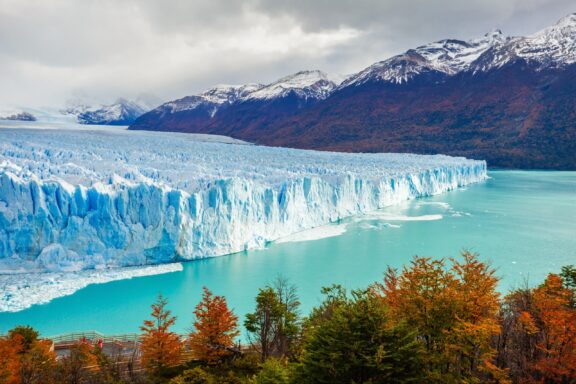
The largest glaciers in the world are located closer to the Earth’s poles, away from the heat of the equator, but each has its own geological history and unique features. Read on to learn more about these impressive natural features.
What is a Glacier?
In order to talk about the world’s largest glaciers, it’s important to be able to define them. A glacier is a large accumulation of ice, snow, rock, and sediment that moves slowly over land due to the force of gravity on its own weight.
Glaciers are present year-round and are typically found in regions with temperatures at or below freezing and large amounts of snow accumulation. Over time, large snow accumulations that do not melt recrystallize and continue to grow in mass, becoming glaciers.
There are several types of glaciers, and they can be classified based on their size, location, and climate.
What’s the Largest Glacier in the World?
The largest glacier in the world is the Seller Glacier, which is located on the mainland of Western Antarctica. It covers an area of more than 7,000 square kilometers.
Determining the Largest Glaciers in the World
Identifying the world’s biggest glaciers is a task easier said than done. Their makeup of slow-moving ice and snow makes glaciers notoriously difficult to measure. There is also some subjectivity involved in deciding where a glacier begins and ends.
It’s also necessary to make the distinction between glaciers and glacier complexes — a group of contiguous glaciers. Finally, it’s important to decide whether to measure the lengths of the largest glaciers or to measure the total area covered by each.
Fortunately, this article published in the Journal of Glaciology goes through the rigorous process of ranking both glaciers and glacier complexes in terms of total area. These are the rankings we’ve used in this post.
| Rank | Name | Size | Location |
| 1 | Seller Glacier | 7,018 km2 (2,710 mi2) | Antarctic Mainland |
| 2 | Thurston Island Glacier No. 1 | 5,261 km2 (2,031 mi2) | Antarctic Islands |
| 3 | Alexander Island Glacier No. 1 | 4,766 km2 (1,840 mi2) | Antarctic Islands |
| 4 | Alexander Island Glacier No. 2 | 3,980 km2 (1,537 mi2) | Antarctic Islands |
| 5 | Mercator Ice Piedmont | 3,499 km2 (1,351 mi2) | Antarctic Mainland |
| 6 | Malaspina-Seward Glacier | 3,363 km2 (1,298 mi2) | Alaska |
| 7 | Wykeham Glacier South | 3,176 km2 (1,226 mi2) | Canada |
| 8 | Bering Glacier | 3,025 km2 (1,168 mi2) | Alaska |
| 9 | Hubbard Glacier | 2,834 km2 (1,094 mi2) | Alaska |
| 10 | Barnes Ice Cap South Dome North Slope Glacier | 2,771 km2 (1,070 mi2) | Canada |
10. Barnes Ice Cap South Dome North Slope Glacier
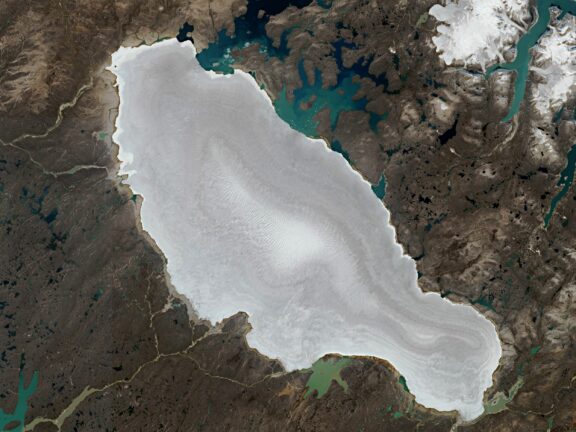
Total size: 2,771 km2
The tenth-largest glacier in the world is part of the larger Barnes Ice Cap, which is located on Canada’s Baffin Island. Located in the Baffin Mountains, the ice cap contains some ice that is thought to be 20,000 years old. Unfortunately, regional warming is causing the ice to thin.
The entire Barnes Ice Cap covers about 6,000 square kilometers, and this glacier stretches for half of that area.
9. Hubbard Glacier
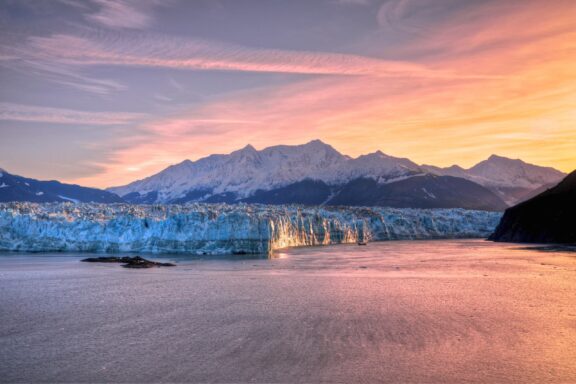
Total size: 2,834 km2
Next on this list of gigantic glaciers is the Hubbard Glacier, which stretches across eastern Alaska and parts of Yukon, Canada. The glacier gets its name from Gardiner Hubbard, a founder and the first president of the National Geographic Society. This isn’t to be confused with the other, smaller Hubbard Glacier, located in Northwestern Greenland.
In May of 1986, the advancing Hubbard Glacier created Russell Lake by blocking the outlet of Russell Fjord. The subsequent buildup of runoff in the lake led to the natural dam failing in October of that year, causing the largest glacial lake outburst flood in recorded history.
It takes roughly 400 years for ice to travel the length of the Hubbard Glacier, which means that the ice at the foot of the glacier is approximately 400 years old.
8. Bering Glacier
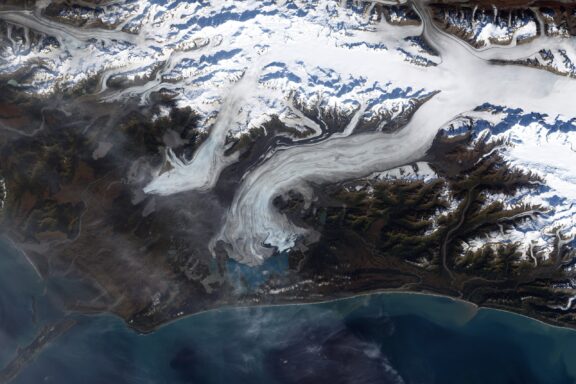
Total size: 3,025 km2
The Bering Glacier is located in the US state of Alaska, currently terminating in Vitus Lake. The glacier is named after Vitus Bering, a Danish cartographer, explorer and officer in the Russian Navy. Also named after Bering are the Bering Strait, Bering Sea, and Bering Island.
Due to warming temperatures, the Bering Glacier has been thinning and retreating over the past century. This is a trend that is seen among most of the glaciers along Alaska’s western coast. The glacier does experience periods of accelerated advancement known as “surges,” but these are followed by periods of retreat.
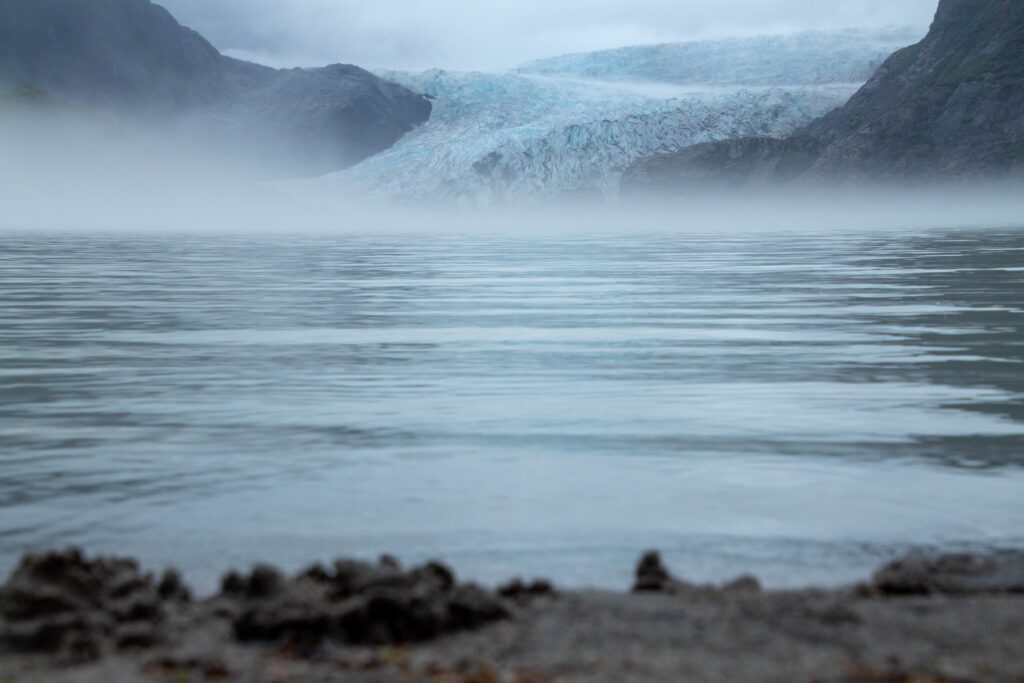
One of the effects of retreating glaciers in the region is an increase in the presence of earthquakes. Bering Glacier is so heavy that it can help stabilize tectonic plates by weighing them down; these plates become less stable as the glacier loses mass.
7. Wykeham Glacier South
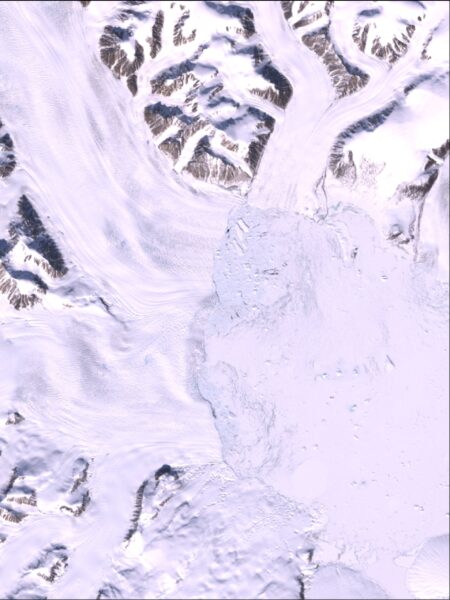
Total size: 3,176 km2
The Wykeham Glacier South spreads across an area of 3,176 square kilometers on Ellesmere Island in Canada, one of the largest islands in the world.
Until recently, Wykeham Glacier connected with Trinity Glacier, also on Ellesmere Island, to form the Wykeham-Trinity Glacier. Glacial retreat has caused a separation of the two glaciers, with Wykeham Glacier experiencing 1.5 kilometers of retreat between 2004 and 2016.
Both the Trinity and Wykeham Glaciers became some of the fastest-flowing icebergs in the world by 2015, and they became responsible for about two-thirds of all iceberg production in the Canadian Arctic in 2020.
6. Malaspina-Seward Glacier
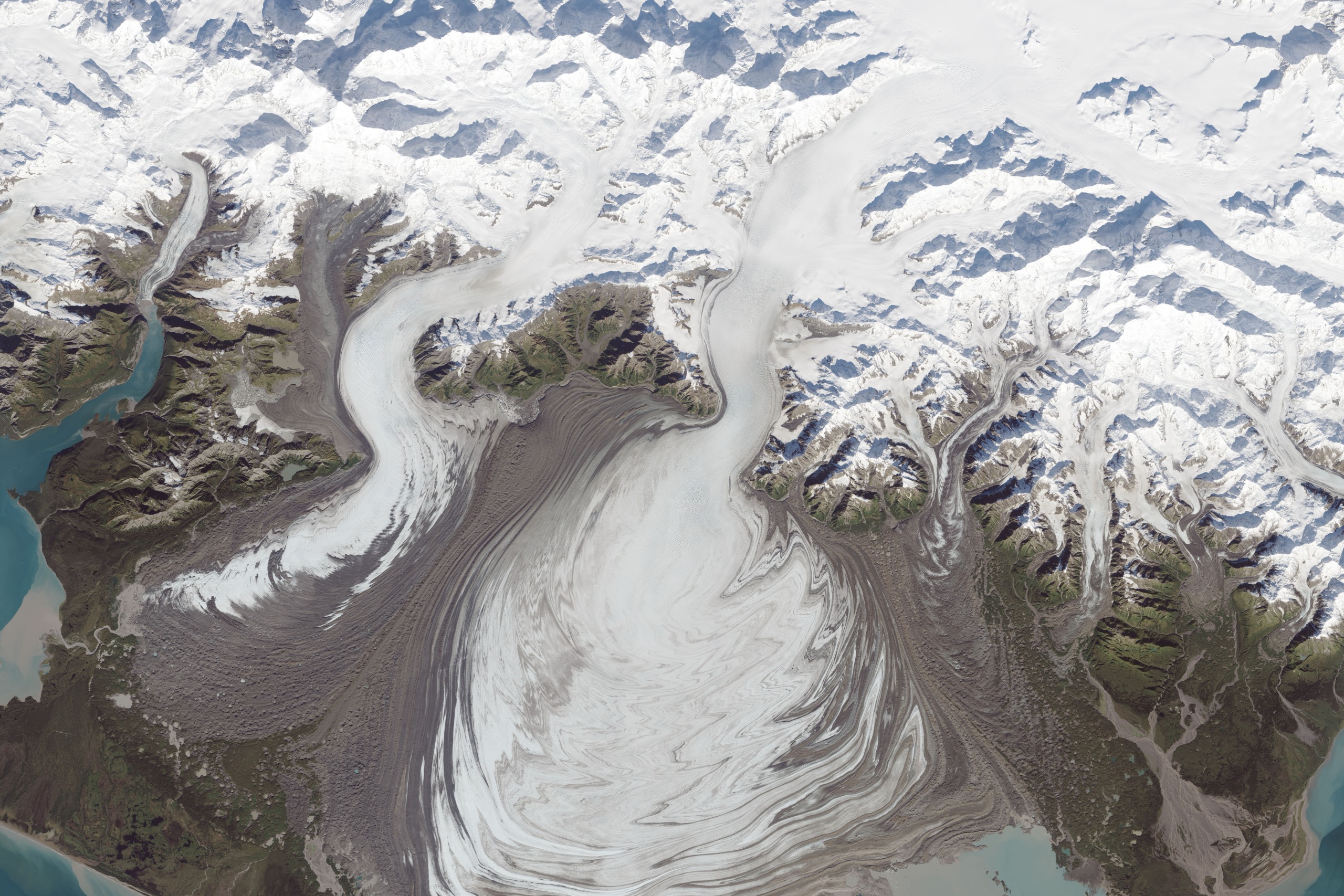
Total size: 3,363 km2
The sixth-largest glacier in the world is the Malaspina-Seward Glacier, located in southeastern Alaska. It is the largest piedmont glacier in the world, which is a sub-type of glacier that flows onto a lowland plain and spreads out in a fan-like shape.
The Malaspina Glacier is actually composed of the Seward, Agassiz, and Marvine/Hayden Glaciers. Though they are often grouped together, they are three distinct glaciers, and the Seward Glacier is the largest of the three.
The name Malaspina comes from the Tuscan explorer Alessandro Malaspina; the Indigenous Lingít people had named it Sít’ Tlein, which translates to “Big Glacier” in English. The Malaspina Glacier was recognized as a National Natural Landmark in 1968.
5. Mercator Ice Piedmont
Total size: 3,499 km2
The Mercator Ice Piedmont is located in eastern Graham Land on the Antarctic Peninsula. First photographed in 1935 by Lincoln Ellsworth, it is formed by the convergence of the Gibbs, Lammers, Cole, and Weyerhaeuser Glaciers. The glacier was named after the Flemish mathematician and geographer Gerardus Mercator.
Covering an area of nearly 3,500 square kilometers, the Mercator Ice Piedmont is the fifth-largest glacier in the world and the second-largest glacier on mainland Antarctica.
This glacier is classified as an ice piedmont, which describes ice covering a low-lying area backed by mountains. The word piedmont comes from the Italian words for “foot” and “mountain.”
4. Alexander Island Glacier No. 2
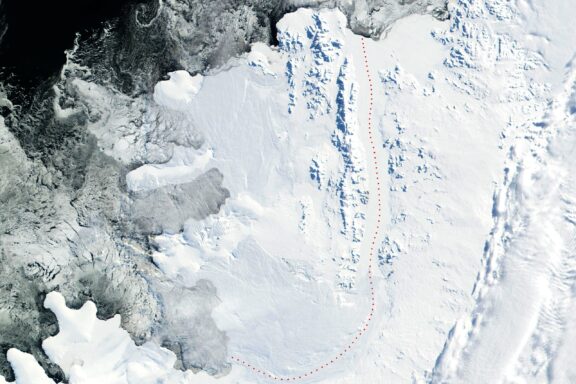
Total size: 3,980 km2
Alexander Island is located in the Antarctic Islands and is home to two of the largest glaciers in the world. The names of these glaciers are simply numbered, and there isn’t a great deal of information available on either.
Alexander Island Glacier No. 2 measures just under 4,000 square kilometers in total area covered, placing it at number four on this list of the world’s biggest glaciers.
The largest of the Antarctic Islands, Alexander Island is located in the Bellingshausen Sea and is separated from Antarctica’s Palmer Land by Marguerite Bay and George VI Sound. Although it is considered an island, Alexander Island is connected to mainland Antarctica by the George VI Ice Sheet, which completely fills the George VI Sound.
3. Alexander Island Glacier No. 1
Total size: 4,766 km2
Almost 800 square kilometers larger in size than the previous glacier is the aptly named Alexander Island Glacier No. 1. As with number four on this list, Alexander Island Glacier No. 1 is located on Alexander Island, which got its name from the reigning Russian Tsar when it was discovered during an 1821 Russian expedition.
A permanent ice sheet on Alexander Island surrounds the nunataks — mountain summits and ridges that protrude through an ice sheet — and is made up of glaciers such as Alexander Island Glacier No. 1 that flow west off of the island.
The island’s glaciers flow into the Bach and Wilkins Ice Shelves and into the Bellingshausen Sea.
2. Thurston Island Glacier No. 1
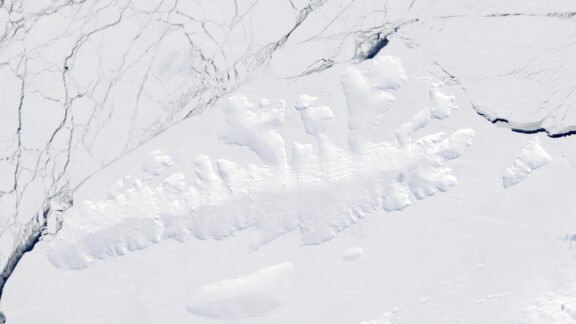
Total size: 5,261 km2
After Alexander and Berkner Islands, Thurston Island is the third-largest Antarctic Island, and it’s home to some extremely large glaciers. The largest of these, and the second largest in the world, is the creatively named Thurston Island Glacier No. 1.
There are many glaciers located on this primarily ice-covered island lying between the Amundsen and Bellingshausen Seas. It was named after W. Harris Thurston, a New York textile manufacturer, designer of the windproof “Byrd Cloth,” and contributor to the expedition that led to its discovery.
1. Seller Glacier
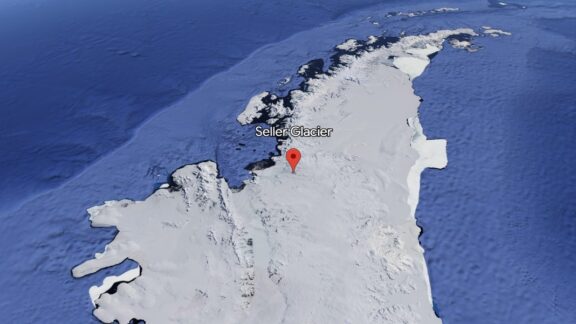
Total size: 7,018 km2
Seller Glacier is the largest glacier in the world. Spanning more than 7,000 square kilometers in the Antarctica Peninsula, it measures 20 nautical miles (37 kilometers) in length and 4 nautical miles (7 kilometers) in width.
It’s situated on the western side of the peninsula, just north of the Alexander Island glaciers. These glaciers are part of the Antarctic Peninsula Ice Body glacier complex.
The glacier gets its name from John Seller, an English hydrographer and compass maker who lived in the late 17th century and was renowned for publishing the first English sailing directions. It was named by the United Kingdom Antarctic Place-Names Committee.
More About the World’s Largest Glaciers
What is an ice sheet?
An ice sheet is an extensive layer of ice that permanently covers a large area of land. They are made up of glacial ice that covers more than 50,000 square kilometers (19,000 square miles).
There are currently only two ice sheets in the world: the Antarctic ice sheet and the Greenland ice sheet. These contain 99% of the Earth’s fresh water.
What is an ice cap?
An ice cap is essentially a smaller ice sheet, or layers of permanent ice that cover less than 50,000 square kilometers (19,000 square miles).
Ice caps are found all over the world, and they sometimes connect with glaciers to form larger ice fields. When they’re found at high latitudes they are referred to as polar ice caps.
Is an iceberg a glacier?
While they are closely related, icebergs are not the same as glaciers. Glaciers are larger masses of slow-moving snow and ice that are located above the water level. Icebergs are smaller floating masses of ice that are 90% below water level.
Icebergs come from glaciers and are produced through a process called calving. This is a process by which large chunks of ice break off from a glacier and enter the sea.
Is Antarctica considered a glacier?
No, Antarctica is not a glacier. Antarctica is a continent that is almost entirely covered by the Antarctica ice sheet. There are several glaciers in Antarctica, including Seller Glacier, the largest in the world.
How old is glacial ice?
The age of glacial ice varies around the world and by glacier. Some of the glaciers in Antarctica may have ice that is around one million years old, which is the oldest ice on the planet. The oldest ice in the glaciers of Greenland is more than 100,000 years old.
Some glaciers have ice that isn’t nearly as old. The longest glacier in Alaska, the Bering Glacier, doesn’t have ice that is more than 400 years old, for example.